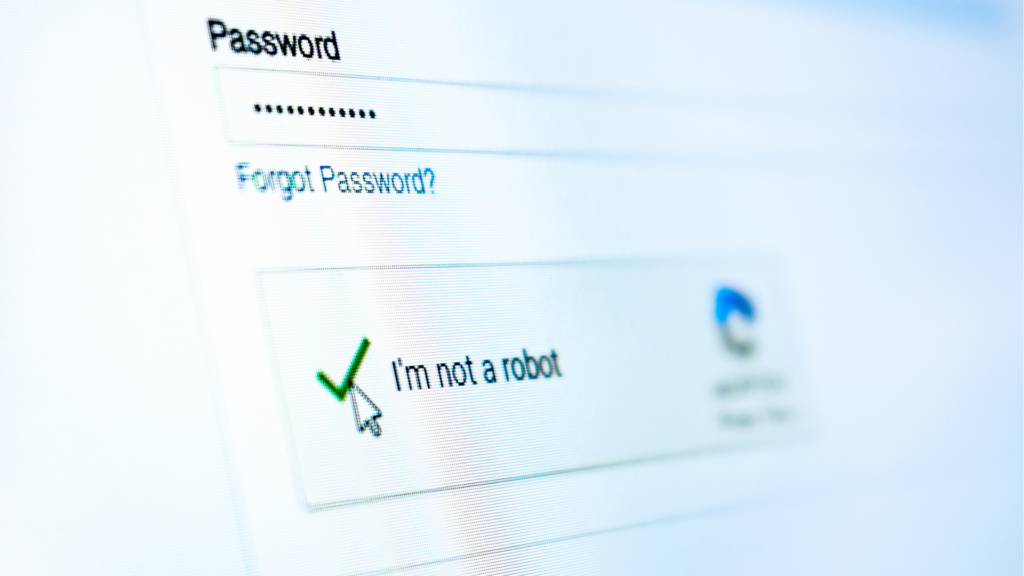Have you ever encountered those squiggly letters or fuzzy images that seem like a secret code to prove you are not a bot? Yes, we are talking about CAPTCHAs – those little gatekeepers of online security. But here’s the catch: while CAPTCHAs safeguard digital spaces, they have unintentionally built walls for people with disabilities.
Are We Sacrificing Accessibility for Security?
Picture this: you are navigating a website, and suddenly, you are faced with a visual puzzle that seems to require superhuman eyesight. It is a CAPTCHA, meant to fend off bots, but it leaves you, a person who relies on a screen reader, out in the digital cold. It turns out that the very thing that is supposed to separate humans from bots can also segregate users based on their abilities.
Researchers at Cloudflare found out that a significant amount of valuable time that could have been put towards more meaningful tasks is often consumed by responding to CAPTCHA challenges. Their findings reveal that users spend an average of 32 seconds completing a single CAPTCHA.
When this is scaled up to encompass a broader user base, the cumulative time lost becomes substantial. Even for those with disabilities who manage to overcome CAPTCHA challenges, the process may take longer, contributing to a disproportionately higher time investment compared to the general population.
Who Benefits from CAPTCHAs, and Who Gets Left Behind?
CAPTCHAs may be the digital bouncers keeping out unwanted bots, but they are also inadvertently shutting the door on users with disabilities.
Take traditional visual CAPTCHAs, for instance – they transform into insurmountable hurdles for the visually impaired, leaving screen readers bewildered amidst distorted characters. And while audio CAPTCHAs were intended to be a lifeline for the visually impaired, they inadvertently create new challenges, casting a fog of confusion for those with hearing impairments.
The conundrum does not stop there. Cognitive impairments add another layer of complexity, turning the act of deciphering CAPTCHA puzzles into a source of exasperation. Meanwhile, individuals with motor impairments find themselves entangled in an even more arduous battle, especially when time-sensitive tasks come into play.
Even the simplicity of mobile devices is not spared from this accessibility challenge. Mobile users encounter their own set of exacerbated obstacles, particularly when trying to navigate touch-based interfaces that seem tailor-made to confound.
The Universal Sigh: User Frustration
Now, let’s talk about the collective sigh that echoes across the digital landscape. It is the sound of frustrated users faced with distorted images, twisted text, and perplexing puzzles. You are not alone if you have given up on a task simply because you could not prove you are human. Should proving you are not a bot be this vexing?
A study conducted by Stanford in 2010 revealed that even a trio of humans could only reach a consensus on the solution to an image CAPTCHA a mere 71% of the time. It becomes clear that when users encounter inscrutable CAPTCHAs, a collective sigh of frustration reverberates across the digital landscape – a frustration that often prompts users to abandon websites altogether. This underscores the urgency of finding a solution that does not just ward off bots but also ensures a seamless and frustration-free experience for all, regardless of their capabilities.
A Glimpse into Accessible Alternatives
Picture a CAPTCHA that strives to find a harmonious balance between accessibility and security. One example that has gained attention is reCAPTCHA v3 by Google. This variant operates discreetly, analyzing your behavior in the background, potentially eliminating the need for deciphering intricate characters. Could this be a way to enhance security without introducing undue complexity?
reCAPTCHA v3 employs a dynamic risk scoring system that considers user engagements within the digital realm of a website. This comprehensive assessment involves an array of factors, spanning from cursor movement to typing patterns, allowing it to adeptly differentiate between genuine human participants and scripted bots while minimizing unwarranted complexities for and user frustration.
Redefining the Future: Where Security Meets Accessibility
So, what’s the takeaway here? Security and accessibility can coexist harmoniously. The key is to prioritize both without compromise. If you are a web developer or a website owner, here is your chance to champion the cause. Start by testing verification methods with screen readers and ensuring keyboard compatibility. It is a small step that makes a world of difference.
The Challenge: Striking the Balance
The challenge is not just about thwarting bots; it is about embracing a digital ecosystem where everyone is welcome. Are we ready to flip the script and say no to frustrating experiences? Contemporary advancements like reCAPTCHA v3, coupled with an enduring commitment to accessibility, signal that there is potential for progress in this direction.
Nevertheless, it is a call to action for web developers, website owners, and tech enthusiasts alike. By embracing accessible alternatives, we are not just solving a puzzle – we are creating a more inclusive digital world, one interaction at a time.
References
W3C Working Group. Inaccessibility of CAPTCHA-Alternatives to Visual Turing Tests on the Web. 25 September 2005. World Wide Web Consortium, https://www.w3.org/TR/turingtest/#the-accessibility-challenge. Accessed 2013.
http://theory.stanford.edu/people/jcm/papers/captcha-study-oakland10.pdf

